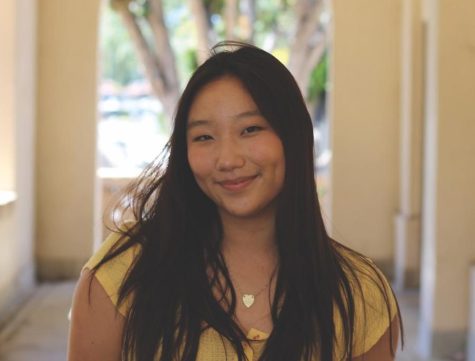Monster attacks an innocent child at the mall. The real money making secret that banks don’t want you to know. Watch this if you want to learn how to fly in the next five minutes. These are real headlines. And, as it turns out, humans cannot physically fly — yet.
These flashy headlines, often called clickbait, are meant to attract the viewer’s attention. Frequently used by content creators who are willing to sacrifice their viewers’ time to increase their views. They seem to value money and their own fame over maintaining accurate algorithms that help people find content that actually appeals to them.
Eve Donnelly, who attended Paly from 2016 to 2018, said she was familiar with clickbait as a content creator herself, although she doesn’t post regularly anymore because she is now pursuing acting. As a student who gained a social media following by posting ASMR videos, she said she attracted her viewers on YouTube through shocking content. Some of Donnelly’s video titles included Eating Leaves ASMR, Cultural Appropriation ASMR, and Eating the Cotton Candy in My Wall.
“To my credit, a lot of my videos were exactly what I said they were, but that doesn’t make the title and thumbnail any less shocking,” Donnelly said. Her channel has a collective total of 2,720,153 views, proving her popularity.
Stanford Assistant Professor of Communication Angéle Christin conducted a study that presented the idea of marketing strategies and how clickbait affected the growing journalism industry. She said clickbait could be put to good use if there is high-quality content to back it up. However, this is usually not the case.
False headlines and thumbnails may seem like just a time suck –– but they can warp reality for some people to portray a story that the creators believe will appeal to the largest number of people and in this way, clickbait is closely connected with fake news.
When this same strategy of dramatizing content to attract views is applied to real world issues that can influence topics from politics all the way to cultural identity, sensational headlines may hold a dangerous amount of power because people are easily influenced by what they see.
And this power is growing quickly. A recent finding by the School of Journalism & New Media at the University of Mississippi shows that almost 40% of media had some relation to clickbait, showing the prevalence of the issue. This number jumps as more content creators post on platforms like YouTube and even so-called reliable news outlets.
Paly students have their own experiences as teenagers turn to social media more and more. Sophomore Claire Zhu said she heard about clickbait and how it affects students who are trying to find content that they want to watch.
Zhu said, “The real problem is that it takes advantage of our emotions and manipulates you into getting interested, only to disappoint you when you find out it was all a lie.”

